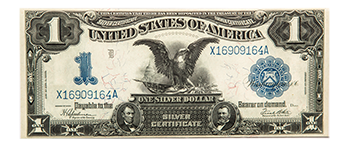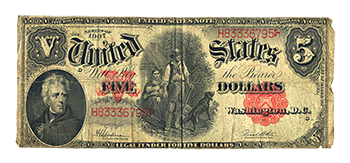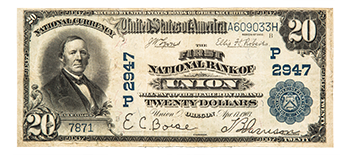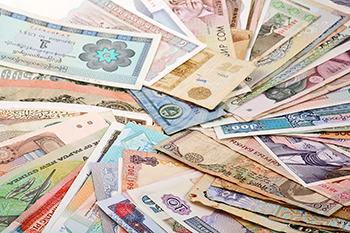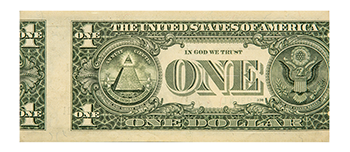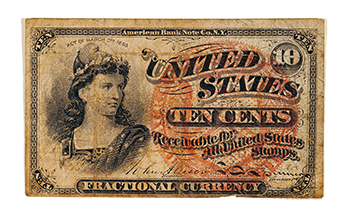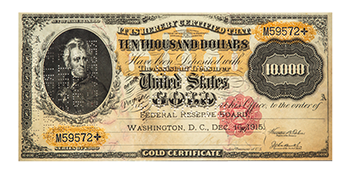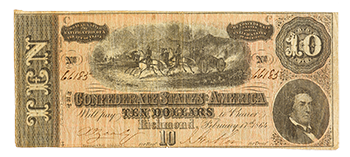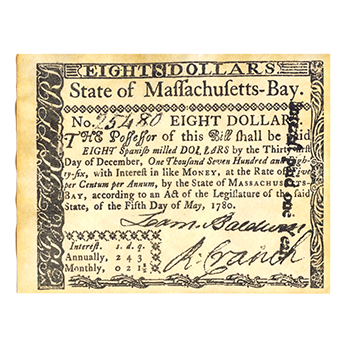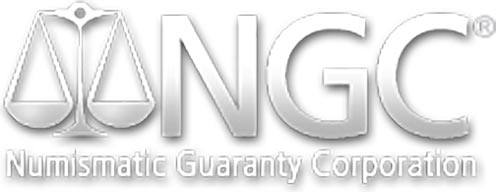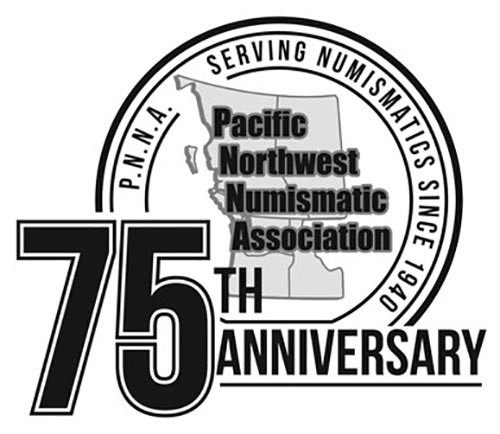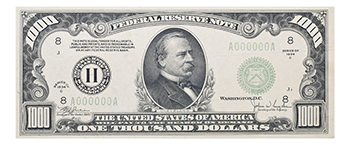
Also known as banknotes, Federal Reserve Notes are the only currency currently issued by the U.S. government. The words “THIS NOTE IS LEGAL TENDER FOR ALL DEBTS, PUBLIC AND PRIVATE” appears on each note.
The early Federal Reserve Notes were large and bore red and blue seals. Though technically it was the 1928 Series, in 1929 the notes changed (as did all U.S. currency) to the familiar green U.S. Treasury Seal and standard dimension of today. In 1945 the U.S. stopped printing denominations over $100 and in 1969 $500 bills were taken out of circulation. The design was largely unchanged until the 1990s. More security features were added in the redesign of the 2004 Series.
Federal Reserve Notes used to be backed by gold in the U.S. Treasury, but in 1971, President Nixon took the country off the gold standard. Now, Federal Reserve Notes are backed only by the government’s declaration that it is legal tender in the United States.
These notes are part of the Federal Reserve System, created in 1913, and therefore there are no individual banks names on the notes, like the National Bank Notes. Created when the National Bank Note system was being phased out, Federal Reserve Bank Notes are often confused with Federal Reserve Notes. Federal Reserve Bank Notes are issued, backed, and redeemable by each individual Federal Reserve Bank. Depending on the condition and the bank issuing them, some Federal Reserve Bank Notes can be quite valuable. Federal Reserve Bank Notes were phased out by the mid-1930s.

